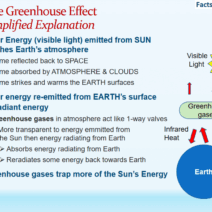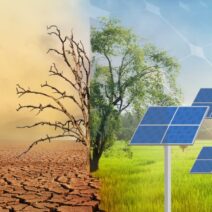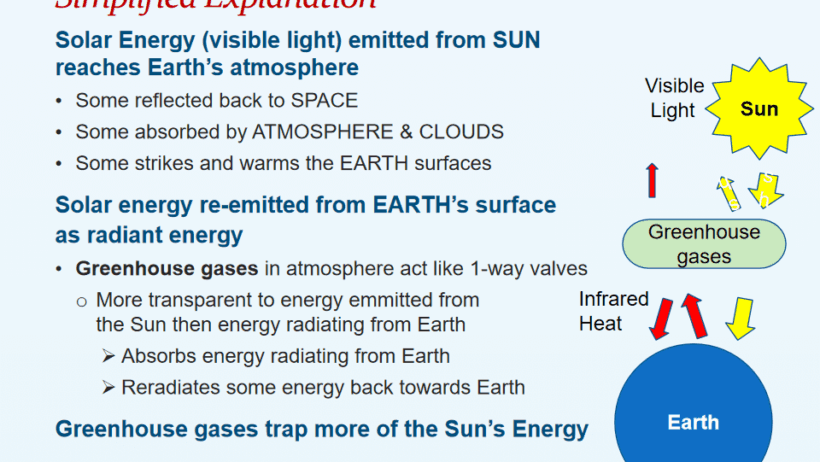Global warming and climate change are often used interchangeably, yet they describe distinct phenomena intricately linked by a series of causative chains. To comprehend how global warming precipitates climate change, one must delve into a multifaceted interplay of natural systems, human activities, and the resulting environmental transformations.
At its core, global warming refers to the gradual increase in the Earth’s average surface temperature due to anthropogenic factors, primarily the emission of greenhouse gases (GHGs) such as carbon dioxide (CO2), methane (CH4), and nitrous oxide (N2O). These gases accumulate in the atmosphere, creating a thermal blanket that traps heat. Without this greenhouse effect, our planet would be inhospitable. However, the perturbation of this delicate balance is where the trouble begins.
The industrial revolution marked a pivotal epoch in human history, invoking a surge in fossil fuel consumption and other energy-intensive processes. This transition catalyzed a dramatic escalation in greenhouse gas concentrations. The burning of coal, oil, and natural gas generates copious emissions, swelling GHG levels in the atmosphere. As a result, Earth’s radiant heat is reabsorbed rather than dissipated, leading to an elevation in temperatures.
This rise in global temperatures initiates a chain reaction. One of the most profound repercussions is the melting of polar ice caps and glaciers. Ice that has persisted for millennia is rapidly succumbing to the rising heat. This not only contributes to rising sea levels, endangering coastal communities with flooding, but it also disrupts ecosystems. For instance, polar bears and other arctic species struggle for survival as their habitats diminish, affecting biodiversity as these species play crucial roles within their ecosystems.
Furthermore, as temperatures increase, oceans absorb some of the extra heat. This phenomenon leads to marine thermal stratification, where warmer, lighter water sits atop cooler, denser layers. Such stratification can obliterate the nutrient mixing vital for marine life, adversely affecting fish populations and, subsequently, the livelihoods of communities dependent on fishing. Moreover, warmer oceans can intensify tropical storms, like hurricanes, yielding more devastating storms that wreak havoc on human settlements.
Climate change manifests not solely through temperature flux but also through altered precipitation patterns. A warmer atmosphere can hold more moisture, leading to increased rainfall in some regions while exacerbating droughts in others. This duality presents substantial challenges for agricultural practices; crops require a delicate balance of water. Therefore, altered precipitation can precipitate food scarcity and economic instability, particularly in vulnerable areas reliant on agriculture for sustenance and economic vitality.
The perturbations in weather patterns contribute further to climate anomalies. Prolonged heat waves, bouts of extreme precipitation, and shifts in seasonality exemplify this trend. Such volatility can overwhelm infrastructure designed for a stable climate, necessitating costly adaptations. Urban environments face challenges from heat islands and flooding, leading cities to adopt new design principles to enhance resilience against the changing climatic landscape.
As ecosystems and societies grapple with these unprecedented shifts, another consequence of global warming manifests: the alteration of habitats. Species migration is a predictable outcome; animals and plants will shift their ranges towards cooler climates, often exacerbating human-wildlife conflicts and resulting in the flourishing of invasive species that disrupt local ecosystems. Herein lies the paradox: as humans modify the environment for better sustainability, they inadvertently create fertile ground for complexities beyond their control.
Moreover, the changes initiated by global warming catalyze feedback mechanisms that exacerbate the phenomenon further. For instance, as Arctic ice melts, it unveils dark ocean water that absorbs more solar energy, perpetuating the cycle of warming—an example of a positive feedback loop. Similarly, thawing permafrost releases stored methane, a potent greenhouse gas, back into the atmosphere, amplifying the warming trajectory. Each of these feedbacks reinforces the urgent need to mitigate and adapt to ongoing changes.
Amid these complexities lies a vital opportunity: recognizing the interconnectedness of global warming and climate change encourages a paradigm shift in how societies approach environmental policies. Transitioning to renewable energy sources, such as solar and wind, can curtail greenhouse gas emissions. These energy sources not only diminish reliance on fossil fuels but also pave the path toward a sustainable economy. Nations that seize this moment can spur innovation, instigate job creation, and fortify their resilience against the changing climate.
Moreover, preserving and restoring forests also plays a pivotal role in addressing climate change. Forests act as carbon sinks, sequestering carbon dioxide from the atmosphere. Strengthening these natural systems fosters a dual benefit: mitigating climate change while enhancing biodiversity. The interdependence of life forms within these ecosystems demonstrates the significance of collaborative efforts to preserve the planet’s integrity.
Ultimately, acknowledging how global warming instigates climate change underscores the urgency with which we must act. It is imperative to transcend traditional paradigms that separate human existence from the environment. The survival of future generations, along with the myriad species that inhabit our planet, hinges on an informed understanding of these processes and an unwavering commitment to reversing the trajectory of climate destruction. By fostering a collective consciousness rooted in sustainability, it is possible to rend the barrier of indifference and forge pathways toward a resilient, thriving future in harmony with our Earth.






